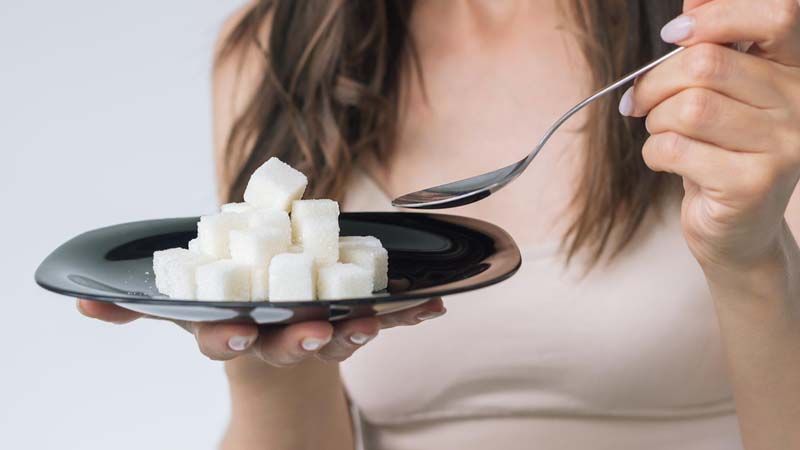Is Cooking Roti On Direct Flame Linked To Cancer Risk?
- 23 months ago
Roti is also cooked directly on an open flame. There have been concerns raised about whether cooking roti on a direct flame can cause cancer. When roti is cooked directly on a flame, it can produce harmful compounds such as polycyclic aromatic hydrocarbons (PAHs) that can cause cancer.
Roti or Chapati is a significant Indian bread eaten at literally every meal. Roti is made from wheat flour, water, and salt and is cooked on a hot griddle or tawa.
There is a belief that cooking roti on a direct flame can produce carcinogenic compounds that can cause cancer. These chemical compounds arise when the roti is subjected to high temperatures and undergoes a process known as pyrolysis.
Pyrolysis is a chemical reaction that occurs when organic substances are heated to high temperatures in the absence of oxygen. During this process, the organic compounds in the roti are broken down into smaller molecules, some of which may be carcinogenic.
[Related: Nutrition for people with cancer]
What study has to say?
There is no significant scientific evidence to claim that cooking roti on a direct flame can cause cancer. Studies have shown that the levels of carcinogenic compounds produced during the cooking of roti are low and are not likely to pose a significant health risk.
Moreover, you can reducing the danger of cancer from eating roti cooked on a direct flame as there eaten in small portions as part of a bigger meal. It means that even if there were some risks associated with cooking roti on direct flame, the overall risk to an individual would be low.
Why should you cook roti on tawa?
Cooking roti on a tawa is a traditional and popular method of preparing this Indian flatbread. There are several reasons why you should cook roti on a tawa:
- Even heat distribution: A tawa is a flat and round iron or heat-conductive material griddle. When heated, it properly distributes heat throughout the surface, ensuring that the roti is evenly cooked.
- Retains nutrients: Cooking roti on a tawa retains nutrients, such as fiber, protein, and carbohydrates. Since the roti is not cooked at a high temperature, these nutrients are neither destroyed nor altered.
- Low-fat cooking: Cooking roti on a tawa uses little oil or ghee, making it a low-fat cooking technique. Because the tawa holds heat efficiently, the roti cooks quickly without sticking or burning.
[You may also like: 8 Basic cooking methods you need to know]
Does cooking rotis on a tawa reduce the risk of cancer?
Using a tawa for cooking roti helps avoid direct exposure of the roti to high heat and flames, which can help reduce these harmful compounds' formation. Furthermore, roti may not be cooked evenly, some sections may burn, and because it is cooked directly on the flame, it can gather particles caught on the gas hob, making it harmful.
Cooking on a tawa typically involves using minimal oil or ghee, which further reduces the risk of cancer and other health problems associated with excess fat.
[Also check: Healthy cooking tips for healthier you]
Other foods associated with cancer
Cooking certain foods on direct flame or high heat can increase the risk of cancer due to the formation of harmful compounds. Here are a few examples:
- Grilled or charred meats: When meat is cooked at high temperatures or over an open flame, it can form harmful compounds such as heterocyclic amines (HCAs) and polycyclic aromatic hydrocarbons (PAHs) increasing the risk of several types of cancer, including colorectal, pancreatic, and prostate cancer.
- Barbecued or smoked foods: Barbecuing or smoking foods can also lead to the formation of HCAs and PAHs, which can increase the risk of cancer. It is because the smoke and flames can cause the fat and juices from the meat to drip onto the coals or flame, creating smoke that contains these harmful compounds.
- Fried foods: Deep-frying foods at high temperatures can also lead to the formation of harmful compounds, including acrylamide. This compound can increase the risk of several types of cancer, including breast and ovarian cancer.
- Toasted bread: When bread is toasted or heated to high temperatures, it can also form acrylamide. While the levels of acrylamide in toasted bread are low, consuming large amounts of toasted bread or other foods that contain acrylamide can increase the risk of cancer.
[Also check: Foods that can increase your chance of getting cancer]
Conclusion
While there may be some concerns about the potential health risks associated with cooking roti on direct flame, the scientific evidence suggests that these risks are low. However, it is essential to be mindful of other factors that can increase the risk of cancer and other health problems associated with the consumption of roti. Using high-quality ingredients, cooking with moderate temperature, and consuming roti as part of a balanced diet. You can enjoy this delicious and nutritious food without undue worry about its potential health effects.








